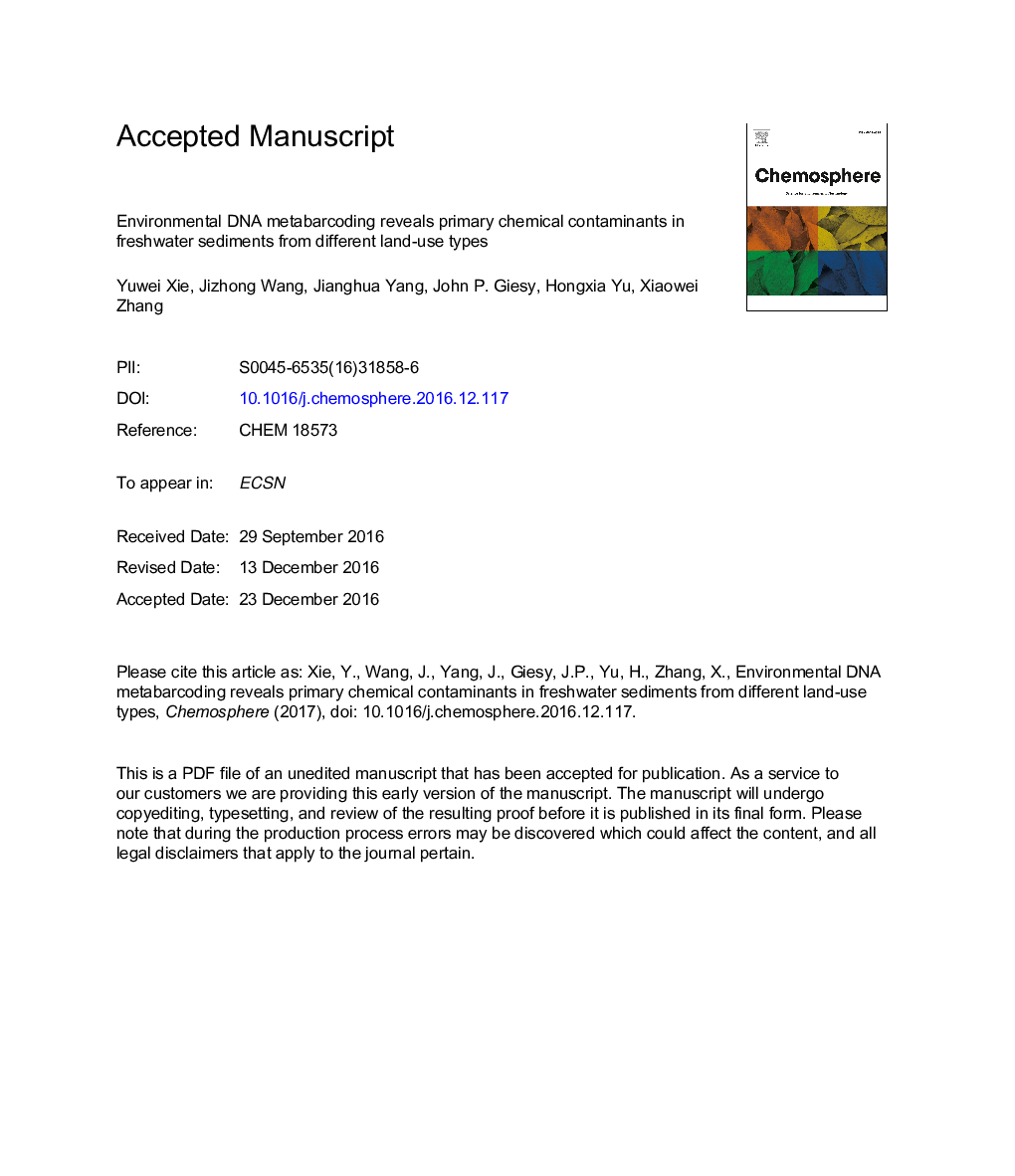| Article ID | Journal | Published Year | Pages | File Type |
|---|---|---|---|---|
| 5747115 | Chemosphere | 2017 | 31 Pages |
Abstract
Land-use intensification threatens freshwater biodiversity. Freshwater eukaryotic communities are affected by multiple chemical contaminants with a land-use specific manner. However, biodiversities of eukaryotes and their associations with multiple chemical contaminants are largely unknown. This study characterized in situ eukaryotic communities in sediments exposed to mixtures of chemical contaminants and assessed relationships between various environmental variables and eukaryotic communities in sediments from the Nanfei River. Eukaryotic communities in the sediment samples were dominated by Annelida, Arthropoda, Rotifera, Ochrophyta, Chlorophyta and Ciliophora. Alpha-diversities (Shannon entropy) and structures of eukaryotic communities were significantly different between land-use types. According to the results of multiple statistical tests (PCoA, distLM, Mantel and network analysis), dissimilarity of eukaryotic community structures revealed the key effects of pyrethroid insecticides, manganese, zinc, lead, chromium and polycyclic aromatic hydrocarbons (PAHs) on eukaryotic communities in the sediment samples from the Nanfei River. Furthermore, taxa associated with land-use types were identified and several sensitive eukaryotic taxa to some of the primary contaminants were identified as potential indicators to monitor effects of the primary chemical contaminants. Overall, environmental DNA metabarcoding on in situ eukaryotic communities provided a powerful tool for biomonitoring and identifying primary contaminants and their complex effects on benthic eukaryotic communities in freshwater sediments.
Related Topics
Life Sciences
Environmental Science
Environmental Chemistry
Authors
Yuwei Xie, Jizhong Wang, Jianghua Yang, John P. Giesy, Hongxia Yu, Xiaowei Zhang,
